High zoom travel compacts seem to be one area of the compact camera market that is continuing to do well in an area otherwise marred by smartphone sales.
[Update: The Cyber-shot HX60V has been available now for almost four years now and has been surpassed by other models. However, it's now at a very affordable price point.]
This type of camera offers something that smartphones can't – a high quality optical zoom. This makes them particularly appealing to those going on holiday, or looking for something a little more flexible than is currently offered by their phone.
In that respect, the HX60V is one of the most impressive options currently available on the market – at least on paper.

It has a market-leading 30x optical zoom, packed into a small body. It also boasts full manual control, although you can’t shoot in raw format. It’s matched in zoom ratio by the Panasonic TZ60, which is probably this camera’s biggest competitor. Along with manual modes, there are also semi-automatic and, of course, fully automatic modes.
Alongside that optical zoom lens, there’s a 20.4 million-pixel 1/2.3 inch Exmor R CMOS sensor. Sony’s Exmor sensors are backlit for best performance in low light shooting scenarios.
What should also boost the camera’s performance in a range of shooting conditions is the Bionz X processor. This is the latest-generation processor available from Sony, and is featured on much more expensive or advanced cameras, including the very top-of-the-line Sony Alpha 7R.

With a native sensitivity of ISO 80–3200, it will be interesting to see how well the Bionz X processor copes with low-light, high-sensitivity shooting situations, as it should offer a significant improvement over the HX50. In fact, we were left a little disappointed with the HX50, so I’m hopeful that all-round image quality will see an improvement.
Unlike other manufacturers, such as Canon, who often use older processors even when newer ones are available, Sony hasn’t skimped on introducing this processor for its latest compact range, and you’ll now find it on others, including the WX350, HX60V and the HX400V.
It’s starting to become an industry standard now, but the HX60 features both Wi-Fi and NFC connectivity. This gives you a number of wireless options, including being able to control the camera remotely from a smartphone or tablet, as well as quickly sharing images between devices. Sony has also introduced the ability to expand the camera’s functionality with PlayMemories apps, something we’ve previously seen on the company’s range of compact system cameras.
A number of different apps can be downloaded – some are free, some are paid for – from the PlayMemories store. Although the number is fairly small at the moment, this gives good scope for Sony to introduce more in the future for download.

There are two variants of the HX60 available. The HX60V features GPS connectivity, which is useful if you want to geotag (i.e. record location information with) your images. Otherwise, specifications for both cameras are exactly the same.
With its full manual control, the HX60V is likely to appeal to enthusiast photographers who have a good knowledge of cameras, but there’s also plenty to appeal to novices or those who like to have a bit more fun with their photography. For starters, there’s Sony’s Sweep Panorama function, and also a number of digital filters that can be applied to images.
It’s getting increasingly difficult to find a camera that doesn’t boast Full HD video shooting, so it’s no surprise to see this functionality on the HX60.
The camera includes a 921,000 dot Xtra Fine TFT LCD, but Sony doesn’t offer a touchscreen. The same can be said for the Panasonic TZ60.
Other interesting features include 10fps shooting capability and a 380-image battery life.
As mentioned, the HX60 goes head to head with the Panasonic TZ60, but it’s also worth noting the Canon SX700. It also features a 30x optical zoom, but has only just been announced, so we haven’t had a chance to review it yet.
The HX60 is fairly chunky for a compact camera, but considering it houses a 30x optical zoom, it’s remarkably sleek.
It’s solid and weighty enough to give it a quality feel, and those who are tempted by this kind of camera as a second, or everyday camera, will probably find that the size and design really appeals.
A chunky, textured grip on the front of the camera gives excellent purchase when using the camera one-handed, while a thumb rest on the back of the camera helps it to sit naturally in the hand. All of the camera’s buttons on the back of the camera are grouped on the right-hand side, making them easy to reach with your thumb.

The HX60 doesn’t have a touchscreen, but there are a good number of buttons and dials to give quick access to a lot of different functions. On top of the camera are two dials, one for changing the shooting mode from manual, to semi-automatic, automatic and scene modes. You’ll also find a Memory Recall slot here, which is useful if you often like to shoot with one particular group of settings – i.e. monochrome or high sensitivity. A second dial is used for altering exposure compensation.
Also on top of the camera is the shutter release button, around which you’ll find the zoom lever. Zooming in and out is pretty quick and fluid, which is important for a camera with such a high zoom ratio.
On the back of the camera is a scrolling dial that doubles up as a four-way navigational pad. Each direction of the pad controls something, such as right to alter flash settings, or left to change the drive mode. Unlike some other Sony cameras, the buttons can’t be customised to a different setting, but there’s a sensible selection of options available nonetheless.
To access the most commonly used settings, all you need to do is press the Fn (function) button. By default, here you’ll find settings such as white balance, sensitivity and Picture Effect. Actually, this menu is customisable, so if you never use the Flash Compensation option, say, you could remove it and replace it with something you do use. It’s a nice way to work.
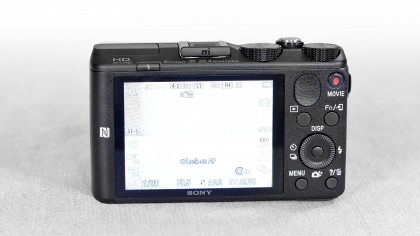
You can change the autofocus point, which is nice to see. To do this, you first need to switch Focus Area from ‘Wide’ to ‘Flexible Spot’. You can also choose a small, medium or large spot, depending on the size of the detail you’re trying to focus on.
Once you’ve selected Flexible Spot, you simply need to press the centre button in the navigation pad and then scroll around the screen to the point you require. It would be quicker to do this with a touchscreen, but it’s not as convoluted as we’ve seen on other Sony cameras, which is good.
Sony has taken the decision to use the same menu system across its range, whether it’s a compact camera, compact system camera or DSLT. As such, if you’re a user of another Sony camera you should be at home here.
It also makes the HX60 all the more appealing to anybody who already owns a Sony model. Fortunately, the menu that Sony has chosen to use is a sensibly arranged one, split into camera settings, custom settings, wireless options, PlayMemories apps, Playback and setup options.
Sony has been integrating Wi-Fi into its cameras for some time now, and for the most part it’s easy to use. Once you’ve completed initial setup of the Wi-Fi connection, you won’t need to input the password again, but we did find you need to manually connect the cameras often enough for it to become annoying.
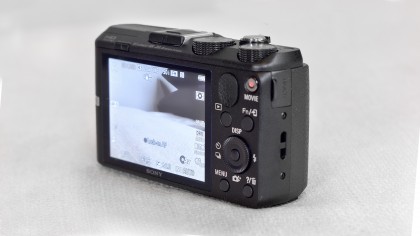
If you have an NFC-enabled device it’s much easier, as all you need to do is simply tap the two together to create the connection. Using the PlayMemories app on an iPhone 4S is good, if not perfect, but it’s a decent solution to getting images from the camera ready for uploading to social networks.
The ability to add apps to Sony cameras has also been around for a little while now, most prevalently on its compact system camera series, such as the NEX 5T. These give you the ability to expand the functionality of the camera.
Some apps are already preloaded onto the cameras, while others can be downloaded from the PlayMemories store. The range is reasonable, but it would be nice to see Sony adding some more interesting options here – especially in the paid-for section.
Of the apps that are pre-installed, Multiple Exposure is fun to experiment with, guiding you along the process of creating a multiple exposure image. You can also use a Remote Control app to take control of the camera from a smartphone or tablet.
Sony cameras have been producing excellent results as of late, and so we had anticipated that the HX60V would also be good – especially given that it has the new Bionz X processor. We were also a little concerned about the quality of images from the HX50, so hoped for an improvement on that front too.
We’re pleased to report that, overall, images are bright and punchy, with vibrant colours that are also generally true to life. Detail resolution is good, with its 20.4 million-pixel sensor capable of resolving a good amount of detail.
Viewing images at normal printing and web sharing sizes – of A3 or below – gives the impression that images are wonderfully detailed, and generally, for most of the people that will use this camera, that’s fine. However, if you do examine images at 100%, it’s fair to say that they’re marred by mottling and a painterly effect, even at the lower end of the sensitivity scale, so if you’re pixel-peeping you may be a little disappointed.
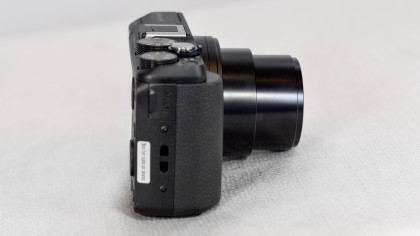
That said, this is also true of images from the Panasonic TZ60, so it’s pretty much to be expected of cameras of this type and price. At higher sensitivities, such as ISO 800 and above, images from the HX60 don’t display too much noise, but the effects of noise reduction can mean that image smoothing removes more details than is ideal.
Generally, the camera is capable of producing well-exposed images, but it does tend to suffer from under-exposure in a lot of situations, meaning you’ll need to dial in some exposure compensation to get a correctly exposed image.
The camera’s automatic white balance system does a good job of producing accurate colours in the majority of conditions, erring slightly towards warmer tones when faced with artificial lighting. If that’s proving to be too much of a problem, then it’s easy enough to switch to a more specific white balance setting.
In terms of standout features, the key selling point of the HX60 is of course its 30x optical zoom, which is matched by the Panasonic TZ60 and the Canon SX700. This focal length is the longest available for a compact camera of this type (only beaten by much bulkier bridge cameras).
Images taken at the furthest point of the telephoto lens are very good, offering a decent amount of detail, which is very similar to the images taken at the widest point of the lens.
Sony also has Clear Image Zoom, which is its version of digital zoom. This boosts the camera’s zoom capability up to 60x. While the images taken at this setting are not as good as those taken at the optical zoom – as it’s basically a cropped version of the 30x optical image – they’re still very good at normal printing and web sizes, so if you need that flexibility it’s very welcome.
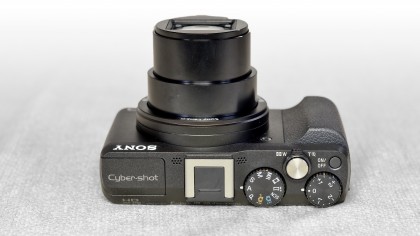
The HX60 has a good range of options for those who want to experiment and get creative with their images. There are a number of Picture Effects that can be applied before a shot is taken. Some, as is to be expected, are better than others, but as it’s largely down to personal taste, it’s worth trying them out. As the camera doesn’t shoot in raw format though, it’s worth remembering that if you shoot with a Picture Effect, you’ll be stuck with it.
For a subtler effect, you can also alter the Creative Style. Options such as Vivid, Sunset and Black and White are available, and you also have the option to customise certain aspects, such as contrast, so they’re worth using if you would like a bit more control over the setting.
Sony’s Dynamic Range Optimiser technology is useful when you’re photographing high contrast situations, as it works to brighten the shadows while maintaining the highlights.
You can set the mode to automatic, or you can set it in a range of strengths from 1-5, with 1 being the most subtle. It you use it on the strongest setting, the effect can be a little fake, but the subtler settings can really help to balance a scene.
Autofocusing speeds are pretty quick, especially in good light. If you step inside, speeds drop a little, but it’s only when the light is incredibly low that the camera struggles to focus at all.
We shoot a specially designed chart in carefully controlled conditions and the resulting images are analysed using DXO Analyzer software to generate the data to produce the graphs below.
A high signal to noise ratio (SNR) indicates a cleaner and better quality image.
For more more details on how to interpret our test data, check out our full explanation of our noise and dynamic range tests.
Here we compare the Sony HX60V with the Panasonic TZ60, Olympus Stylus SH-50 and Canon PowerShot S120.
JPEG dynamic range
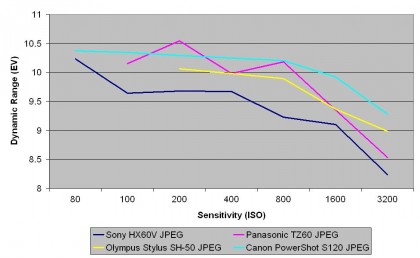
In terms of dynamic range, the HX60V is the worst performer on this test, being beaten reasonably significantly by the Canon PowerShot S120. All of the cameras perform fairly well though, so it’s not too disappointing a result.
JPEG signal-to-noise ratio
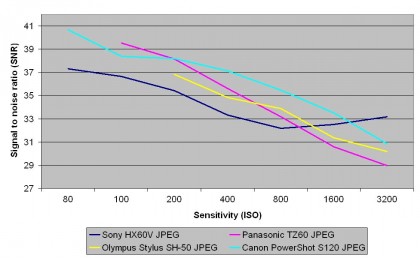
In terms of signal to noise ratio, again, it is the HX60V which is the worst performer on the test here. However, that could be a reflection of the detail which is kept in shots in favour of noise suppression. It’s a shame that you can’t shoot in raw format to control the amount of noise reduction, or otherwise, is applied.
As part of our image quality testing for the Sony HX60V, we’ve shot our resolution chart.
For a full explanation of what our resolution charts mean, and how to read them, check out our full explanation of our camera testing resolution charts.
Examining images of the chart taken at each sensitivity setting reveals the following resolution scores in line widths per picture height x100:
JPEG
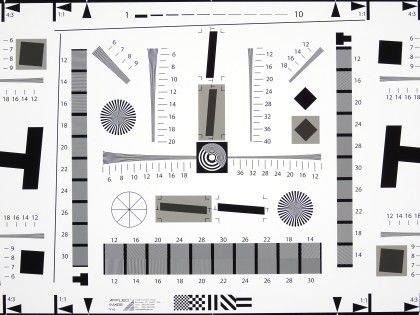
Full ISO 100 image, see the cropped (100%) versions below.
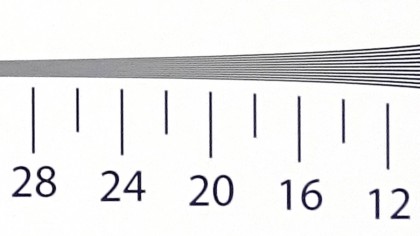
ISO 100, Score: 18. (Click here to see the full resolution image)
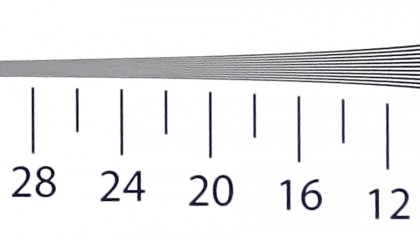
ISO 200, Score: 18. (Click here to see the full resolution image)
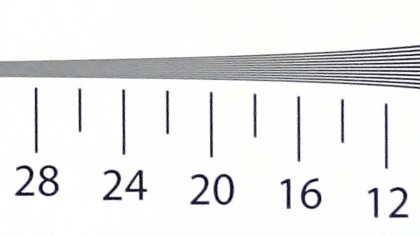
ISO 400, Score: 16. (Click here to see the full resolution image)
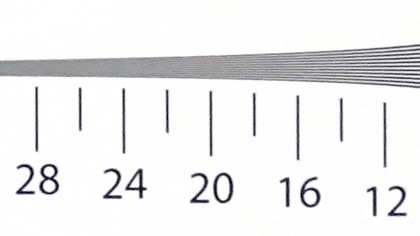
ISO 800, Score: 16. (Click here to see the full resolution image)

ISO 1600, Score: 14. (Click here to see the full resolution image)
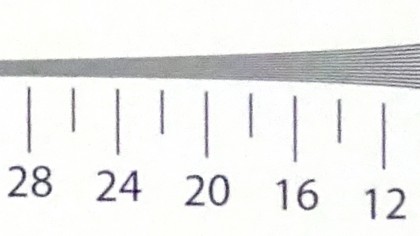
ISO 3200, Score: 12. (Click here to see the full resolution image)
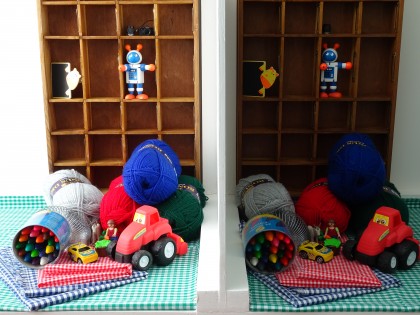
Full ISO 100 image, see the cropped (100%) versions below.

ISO 100. (Click here to see the full resolution image)

ISO 200. (Click here to see the full resolution image)

ISO 400. (Click here to see the full resolution image)

ISO 800. (Click here to see the full resolution image)

ISO 1600. (Click here to see the full resolution image)

ISO 3200. (Click here to see the full resolution image)

If you examine an image like this at 100%, you’ll see that there is a noticeable degree of image smoothing, resulting in a painterly-like effect. However, if you view at normal printing or web sizes, it appears to have plenty of detail – which is how you will view your images most of the time.

The HX60 is capable of producing relatively shallow depth of field effects, despite the fact that its widest aperture is f/3.5. Click here to see the full resolution image.

Shooting with Picture Effects gives you a nice amount of flexibility. Click here to see the full resolution image.
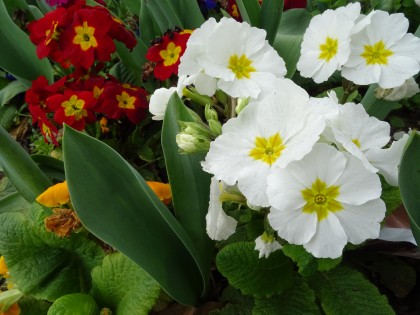
Images straight from the camera are bright and punchy, showing a good level of vibrance without being overly saturated. Click here to see the full resolution image.

With its huge optical zoom range, the HX60 is appealing to those who want to photograph subjects such as nature. Click here to see the full resolution image.

The camera’s Sweep Panorama mode is quick and easy to use, merging images successfully in camera.Click here to see the full resolution image.

At high sensitivities, such as ISO 1250, you can see image smoothing taking effect where noise reduction has been applied, but again, at normal printing and web sizes it’s not particularly noticeable.Click here to see the full resolution image.
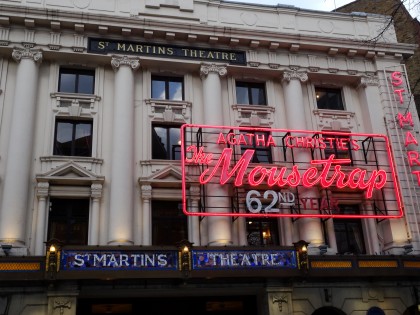
The camera’s metering system is a little prone to underexposure, meaning you’ll need to dial in some positive exposure compensation to get a correctly exposed image at times. Click here to see the full resolution image.






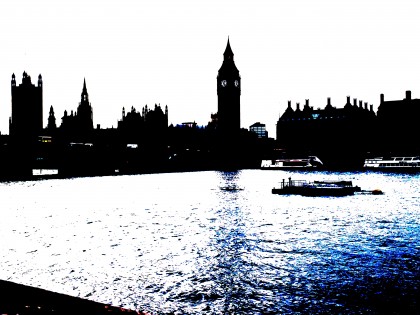






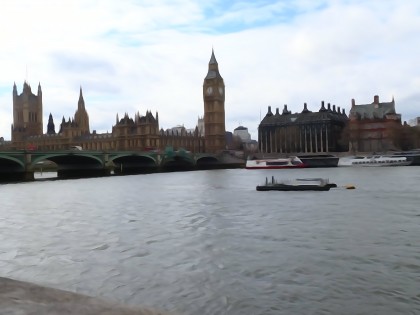


Zoom range

At its widest point, the HX60 offers an equivalent focal length of 24mm, which is great for capturing a lot in a wide scene. Click here to see the full resolution image.

At the maximum telephoto zoom end of the optic, the 30x optical zoom offers an equivalent of 720mm, making it incredibly flexible for travelling and holidaying photographers. Click here to see the full resolution image.

If the optical zoom still isn’t enough reach, then you can shoot with Clear Image Zoom – a sort of digital zoom. This boosts the focal length equivalent up to 1440mm, and still performs reasonably well. Click here to see the full resolution image.
The HX60 is an interesting option for those who want a camera that offers a lot of functionality in a (relatively) pocket-friendly body size.
Fortunately for consumers, there’s a lot of choice on the market at the moment, with three travel compact cameras currently offering the 30x optical zoom reach that the HX60 features.
The HX60 is a very capable camera, producing bright, vivid images with plenty of detail. There’s a problem of image smoothing throughout the sensitivity range, but this is something we’ve also seen on the Panasonic TZ60.
Also, it’s only particularly noticeable when examining images at 100% – something the average user of this camera will never have the need to do. If you’re printing at A3 sizes or below, images look great.
Built-in Wi-Fi and, to some extent, NFC connectivity, is starting to become a bit of an industry norm for modern cameras. Nevertheless, it’s great to see it here, and on the whole it’s easy to use.
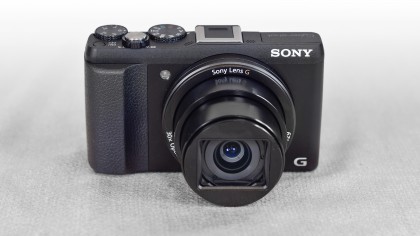
The ability to add apps from the PlayMemories store is a nice function too, as it gives you scope to add optional extras – an app for uploading directly to Facebook, for instance. There’s not a great deal of choice in the store at the moment, but hopefully Sony will continue to support and expand the choice available.
Looking at the downsides, it’s a shame not to see a touchscreen on this model, but a decent number of dials and buttons make operation easy, so it’s not too bad that there isn’t one. That’s also true of thePanasonic TZ60.
Having full manual control is great, as well as other semi-automatic modes, as it makes this an appealing camera for those who own DSLRs or are experienced photographers that want a back-up or travel camera. It would be nice to be able to shoot in raw format though, something which the TZ60 does offer.
There’s a good range of creative options, with Picture Effects and Sweep Panorama being easy and fun to use.
We liked
The HX60 is a sleek camera, especially when you consider its 30x optical zoom. Image quality at the far end of the telephoto optic is excellent, with optical image stabilisation doing a good job of helping to produce blur-free images. This is the key selling point of this camera, and although others offer it, the HX60 does a very good job of producing excellent images at its furthest reach. Digital zoom is good, too.
We disliked
It would be easy for photographers to be put off by the lack of detail when examining images at 100%, but it’s also worth considering the likelihood that you will ever print off an image at huge sizes – it seems unlikely for a camera of this kind. That said, it’s the thing we dislike about the camera the most.
Verdict
The HX60 is a solid choice for anybody who wants a reliable travel camera that can take great shots, has a decent range of creative options and offers a lot of flexibility in terms of the zoom range.
Unfortunately for Sony, where once it offered something unique with its huge zoom range, other manufacturers, namely Panasonic and Canon, have caught up and also offer that range, giving consumers more choice and making it difficult for Sony to stand out quite so much.
Still, it’s an attractive option, with built-in connectivity making it appealing to those who want to share images quickly while out with the camera.